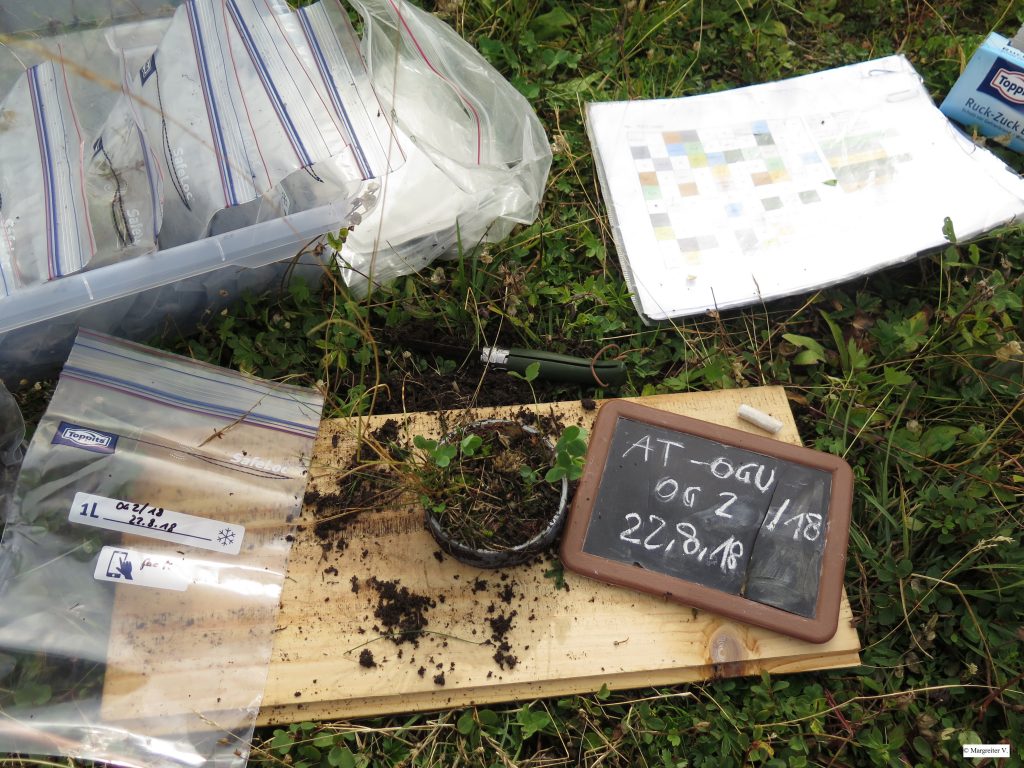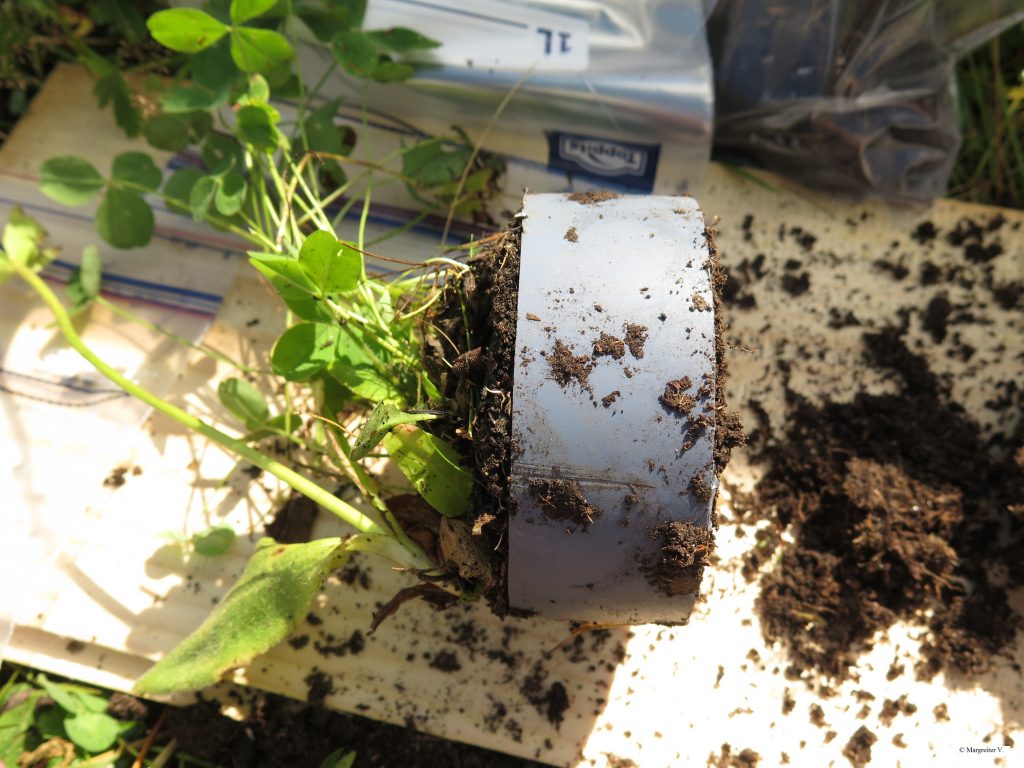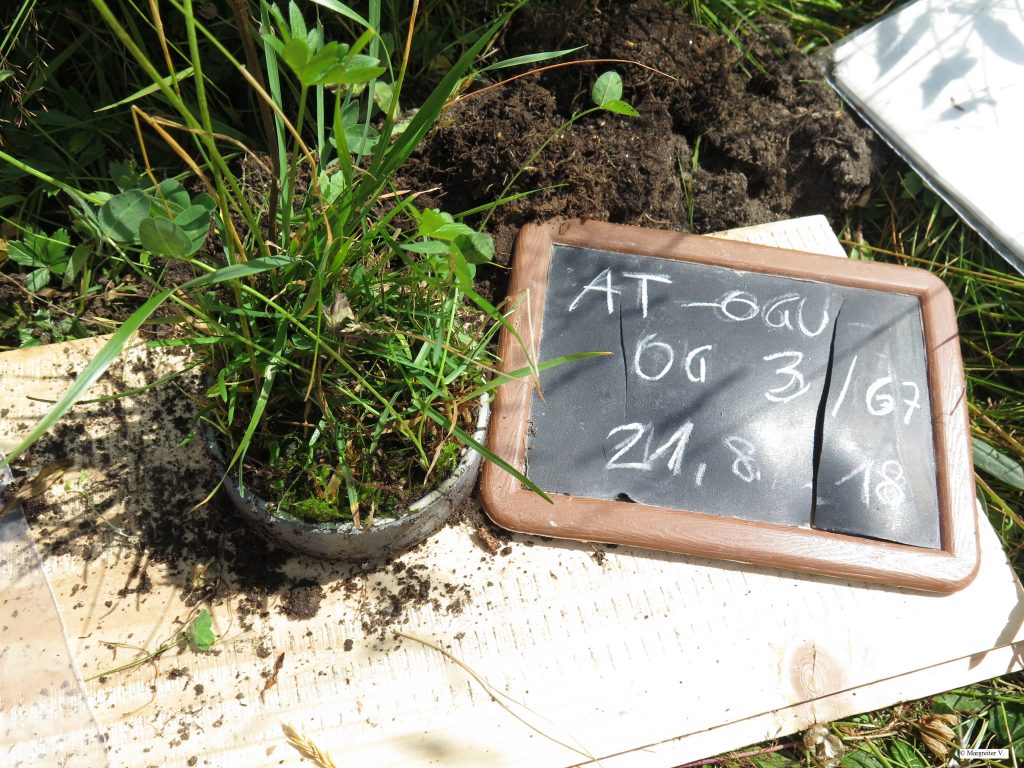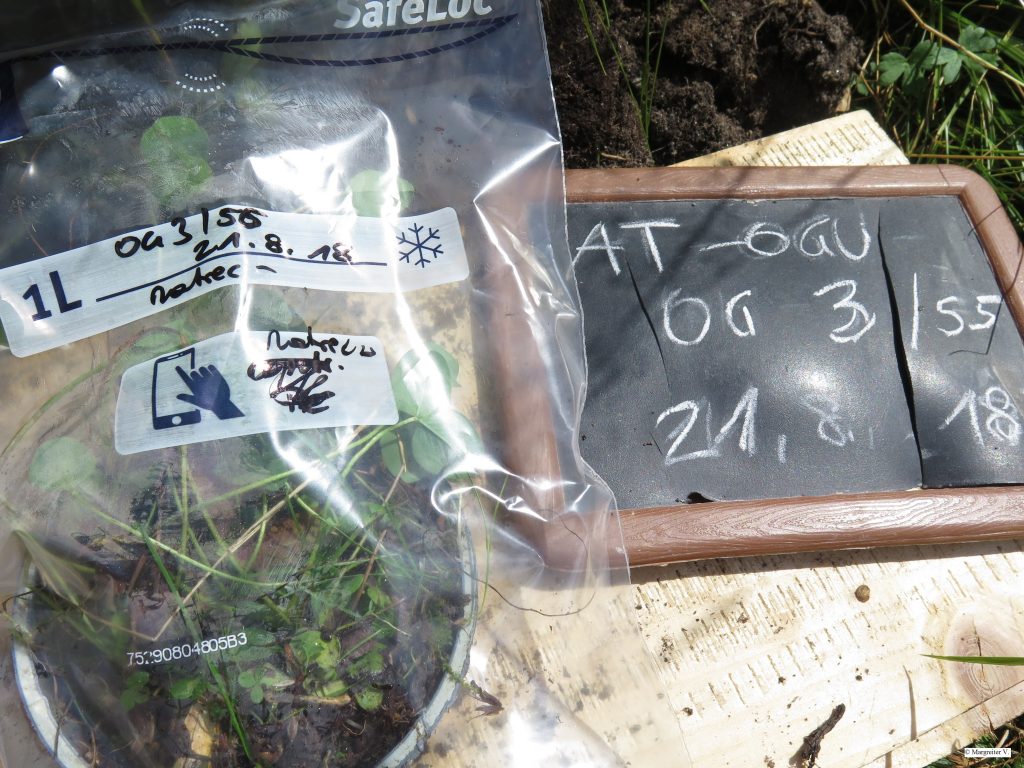Flashback: Field finish & Lab process
In August and September 2018, measuring biomass was on the daily work menu. After 2-3 days of ring-sample harvesting in the field, we spend minimum 3, up to 8 days in the laboratory for biomass data aquisition. This procedure was repeated four times, because of four experiment sites along an altitudinal gradient. See what was going on:
Shown here are examples of the lowest experiment site OG at 2000 m a.s.l. in Ötztal, in the central Austrian Alps. Rings were pulled out of the soil with a plant trowel. Roots and soil outstanding of the ring were cut off with a knife. The complete rings were put in plastic bags and stored in the fridge immediately after harvest at ~4°C until further processing in the Lab.
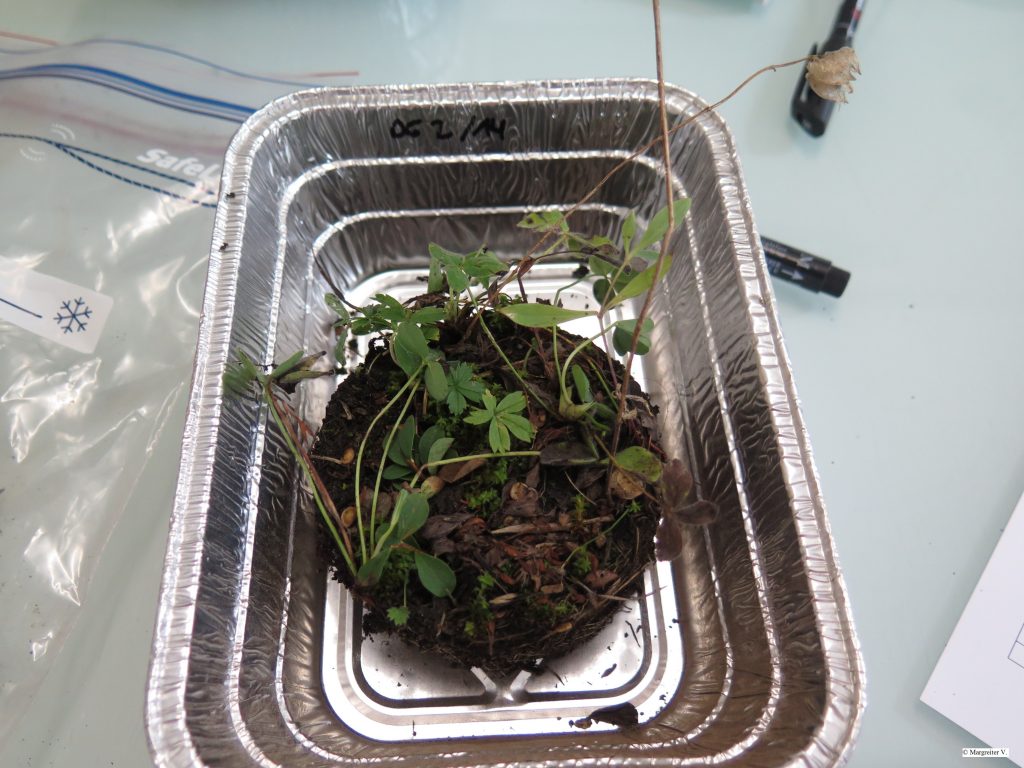
In the Laboratory, whole ring content (without plastic ring) was measured before and after cutting the aboveground plant parts off.
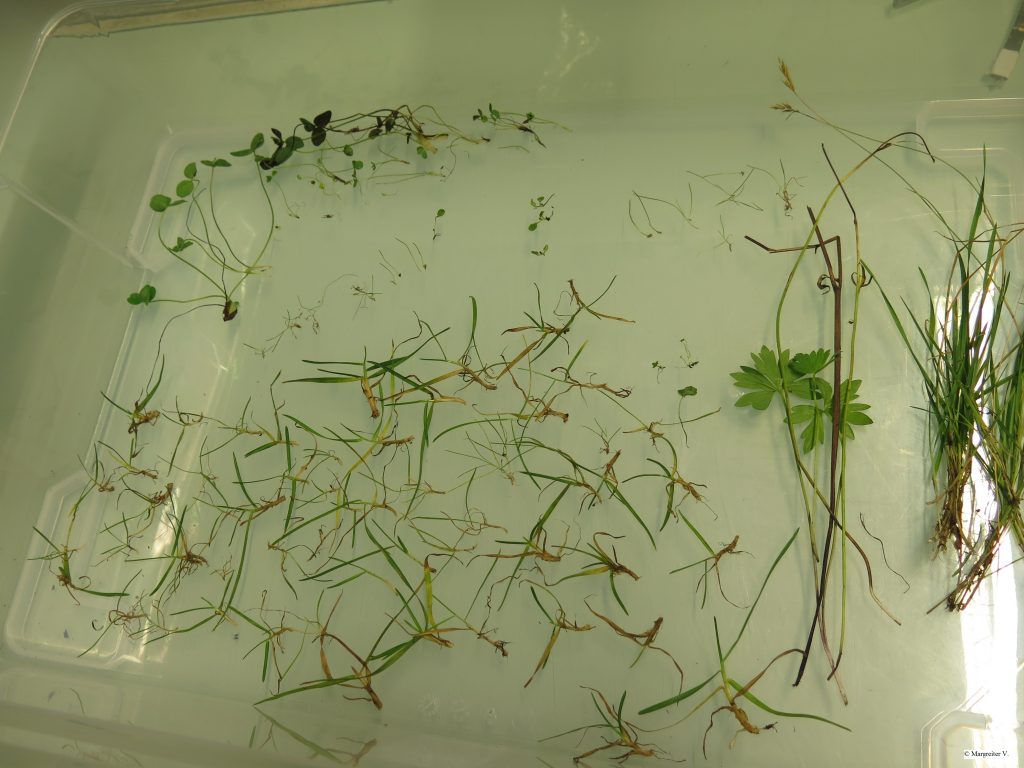
The cut off plants were sorted and species were identified. The picture on the right shows the output of a ring with facilitation treatment and sown bulbils of Poa alpina (target species).
The output seen above comprises 63 surviving bulbils of Poa alpina, 17 Trifolium pratense (including 7 seedlings), 2 Geranium sylvaticum, 16 shoots of Anthoxanthum odoratum, 4 shoots of Myosotis alpestris, 3 shoots of Ranunculus villarsii and 8 seedlings of Poa alpina and Agrostis capillaris each. Fresh weight was measured per species.
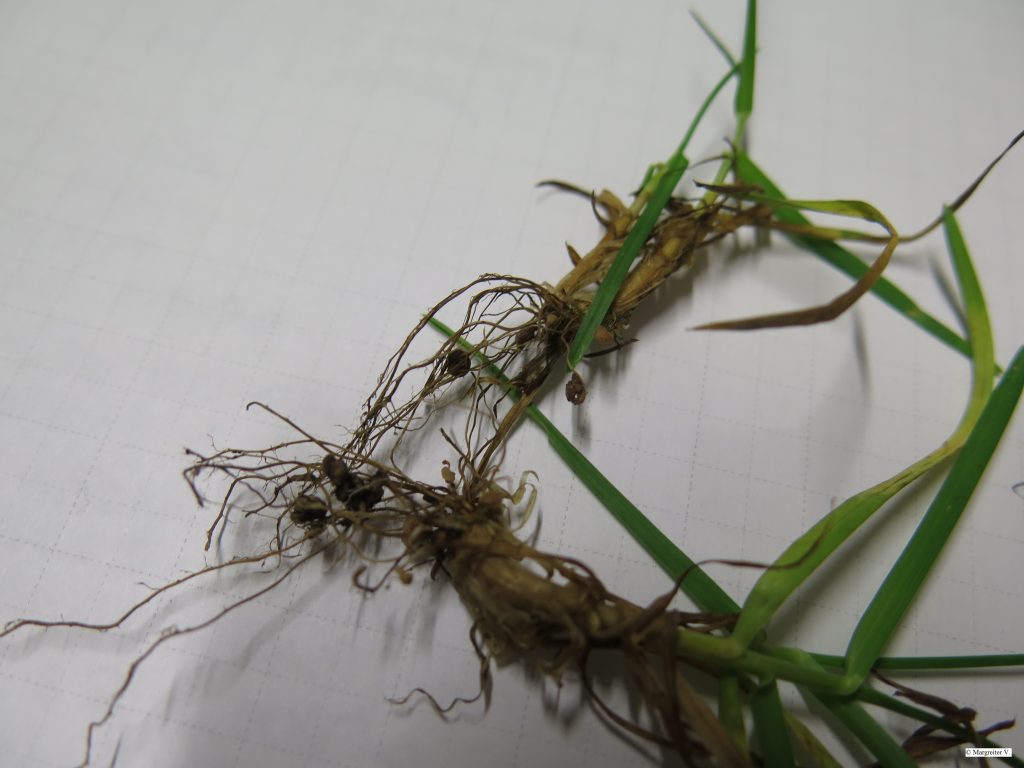
The central plant, the facilitator, was removed separately including above- and belowground parts. These were weighted separately as well. Pic plant: Poa alpina
After the fresh weight was measured, the aboveground plant-parts were put in paper bags (species wise) and put in the dry oven at 70°C.
Additionally, 10 individuals of each sown species (9 species) were pulled out of the soil from randomly chosen rings at each altitudinal experiment site, with as much roots as possible.
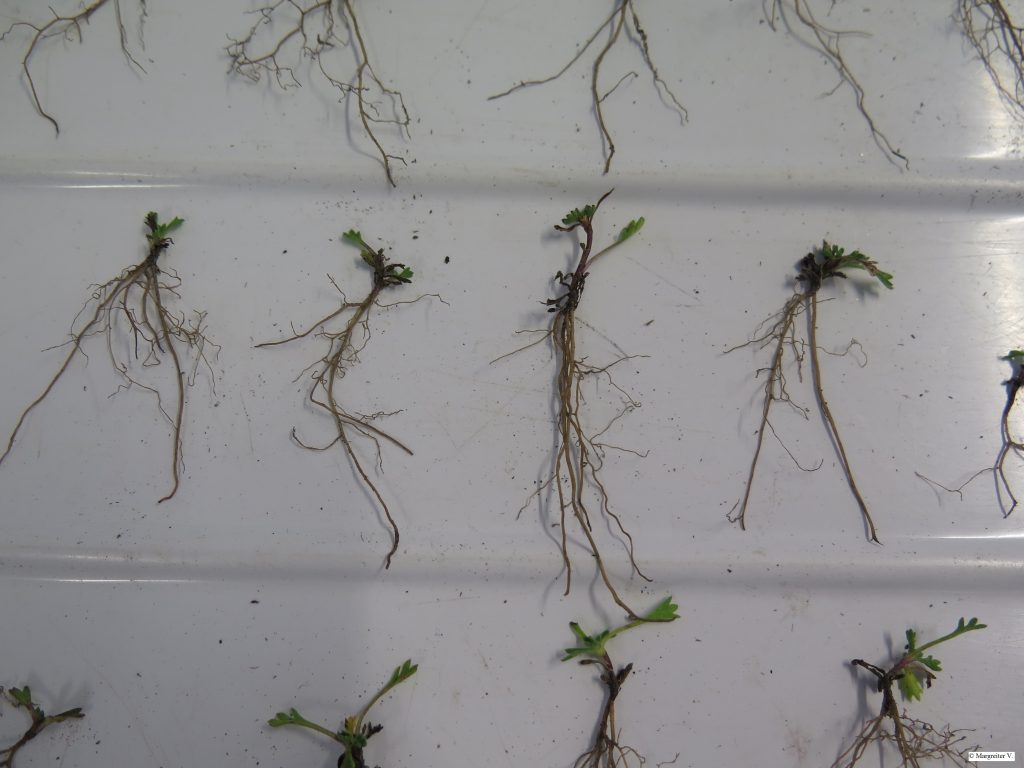
From these individuals we measured fresh weight aboveground as well as belowground. The picture shows Leucanthemopsis alpina individuals from 2600 m a.s.l.
The data from these 10 individuals may not be used in a big analysis, but they surly give an insight into the accumulated root biomass of the species within the two vegetation periods along the altitudinal gradient.
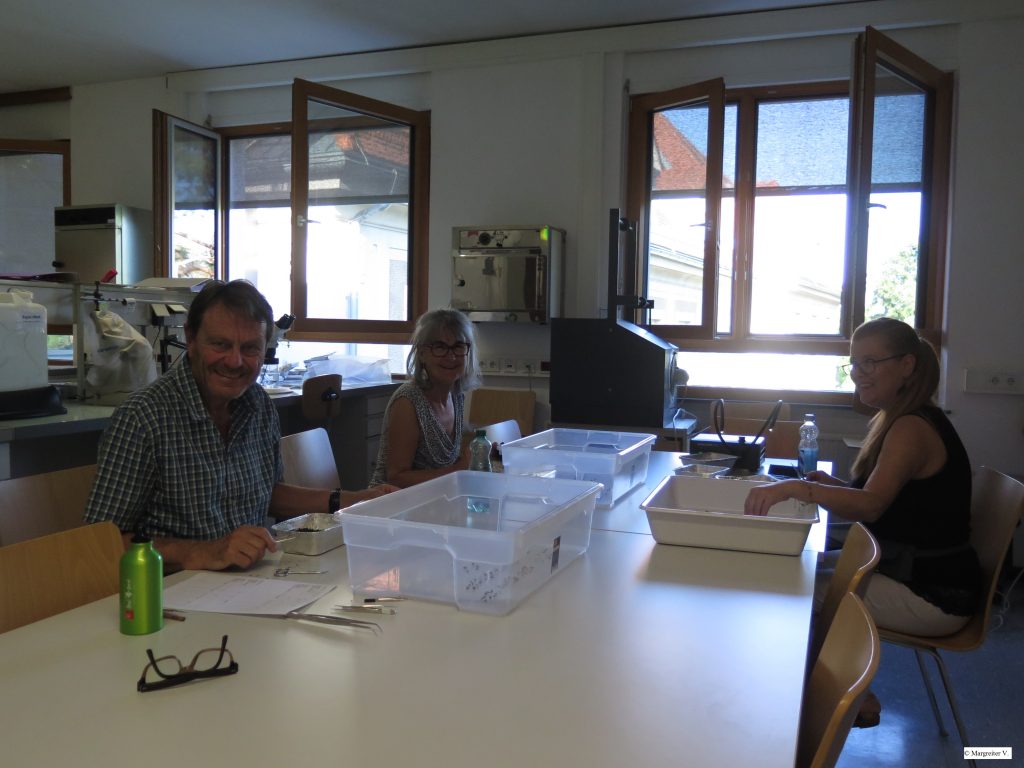
Without this crew, especially in the lab, the fresh weight measurements would have not been possible! Many thanks! Vera
